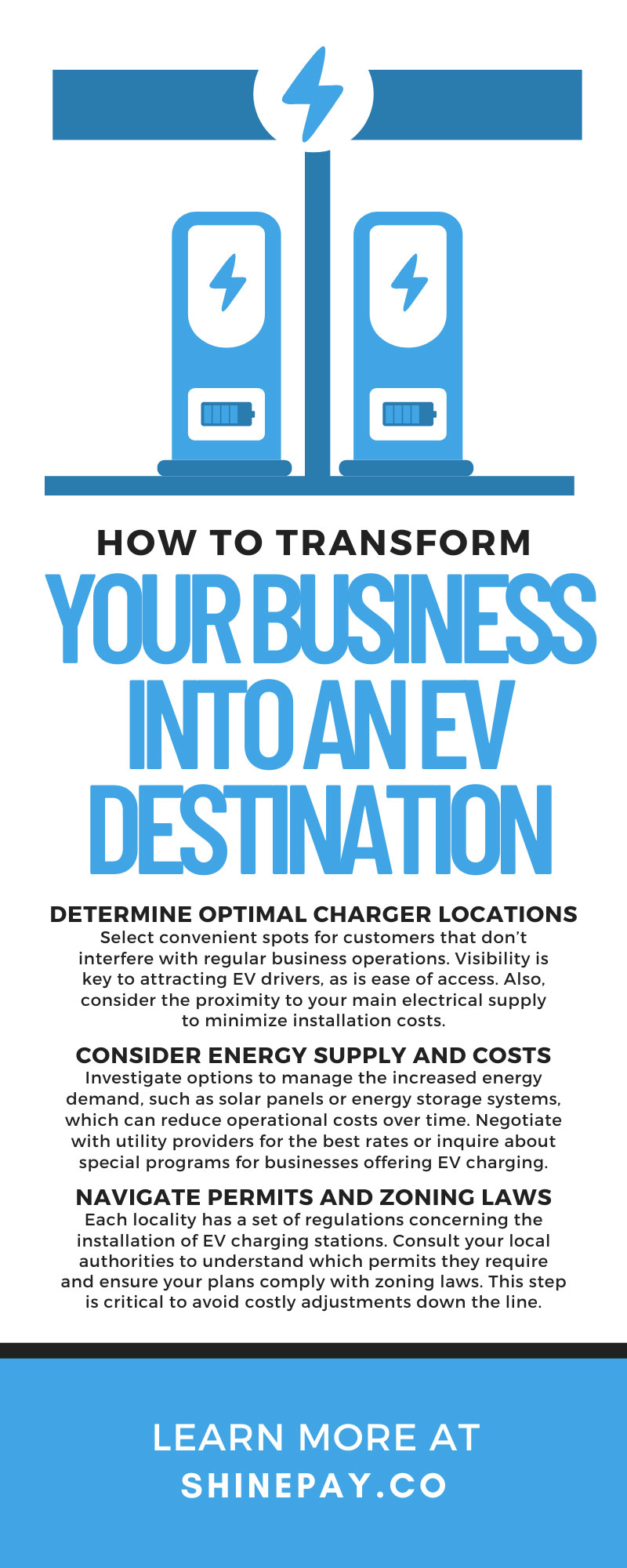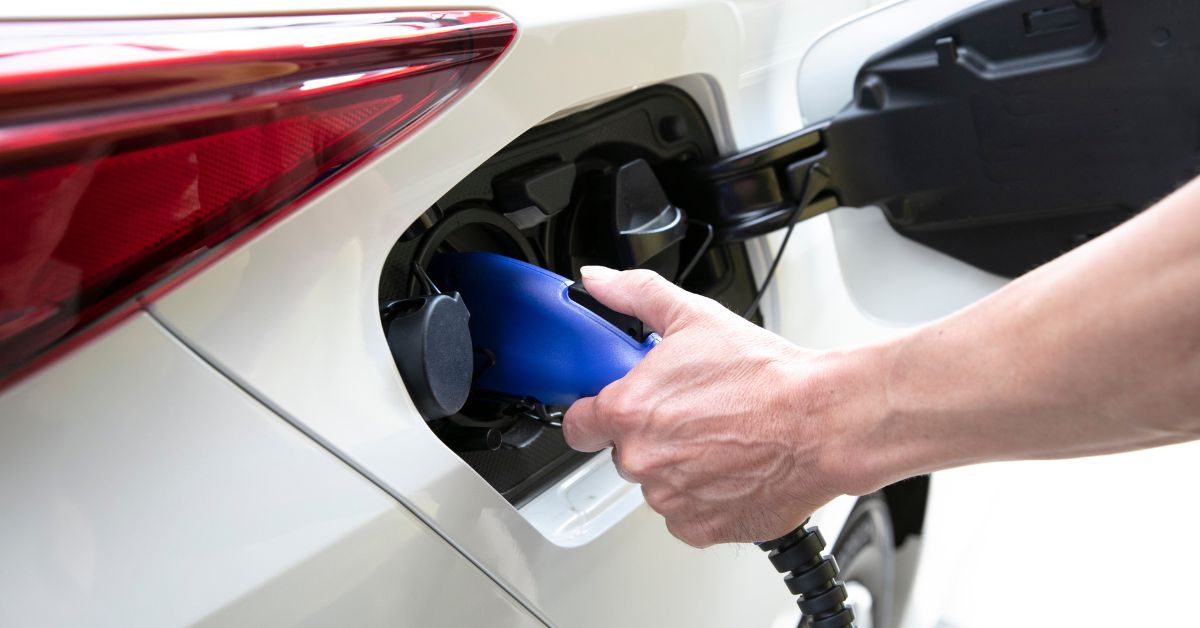The surge in electric vehicle (EV) sales is not just a trend, it’s a revolution reshaping the automotive landscape. This shift presents a golden opportunity for business owners to become part of a growing ecosystem that supports sustainability while attracting a new customer base. Transforming your business into an EV destination can set you apart, drawing in EV drivers with the promise of convenience and charging capabilities. Here’s how you can make this pivot smoothly and effectively.
Assessing Feasibility
Taking a step back and assessing the feasibility of such a venture is crucial before diving headfirst into transforming your business into an EV destination. This phase is about gathering the necessary information and considering various factors influencing your decision. A thorough feasibility assessment—from evaluating the initial costs and potential return on investment to understanding the specific needs of EV drivers—will provide you with a clear roadmap. Let’s explore the primary considerations to ensure this exciting transition is viable and successful.
Understand Your Customers’ Needs
Begin by gauging the demand among your current and potential customers. Are there a significant number of EV drivers in your area? Conduct surveys or look into local EV registration data to understand the prospective demand for charging services at your location.
Evaluate Infrastructure Requirements
Consider the space available on your premises for installing EV charging stations. You’ll need accessible, well-lit areas that can accommodate the necessary equipment. Assess the current electrical infrastructure to determine if upgrades are essential to support the added energy demand.
Financial Investment Considerations
Investing in EV charging stations involves upfront costs for purchasing the equipment and any necessary electrical upgrades, plus ongoing expenses for maintenance and electricity. Research federal, state, or local incentives that may offset these costs. Understanding the financial aspect is crucial for making an informed decision.
Planning the Transformation
Alright, you’ve gathered the initial intel, and it looks like transforming your business into an EV destination is promising. Now, let’s break it down into actionable steps to ensure the transformation is seamless. Planning is crucial—it’s where your good intentions turn into reality, paving the way for successful implementation. We’ll guide you through creating a comprehensive plan that covers everything from selecting the right charging stations to promoting your new amenities to the EV community. Ready to get started? Let’s dive in!
Choose the Right Type of Charger
The three main types of EV chargers—Level 1, Level 2, and DC Fast Chargers—offer different charging speeds.
- Level 1: These chargers provide the slowest charge and use a standard 120V wall outlet. They’re best for the workplace or overnight charging.
- Level 2: These chargers offer a faster charge and can charge a standard EV within hours. It’s the charger most businesses choose.
- DC Fast Chargers: These incredibly powerful chargers can fully recharge an EV within an hour. They’re the leader for drivers on the go.
Level 2 chargers balance cost and charging speed, making them suitable for most businesses. Consider your customers’ dwell time to decide which charger fits best.
Determine Optimal Charger Locations
Select convenient spots for customers that don’t interfere with regular business operations. Visibility is key to attracting EV drivers, as is ease of access. Also, consider the proximity to your main electrical supply to minimize installation costs.
Consider Energy Supply and Costs
Investigate options to manage the increased energy demand, such as solar panels or energy storage systems, which can reduce operational costs over time. Negotiate with utility providers for the best rates or inquire about special programs for businesses offering EV charging.
Legal and Regulatory Considerations
Getting a handle on the legal and regulatory landscape is important before diving headfirst into transforming your business into an EV destination. This section will guide you through the key legal considerations and requirements, ensuring you can navigate any red tape. We’ve got you covered, from permits and zoning laws to safety standards and liability insurance. Let’s make sure your transition is smooth, compliant, and successful.
Navigate Permits and Zoning Laws
Each locality has a set of regulations concerning the installation of EV charging stations. Consult your local authorities to understand which permits they require and ensure your plans comply with zoning laws. This step is critical to avoid costly adjustments down the line.
Comply With ADA and Safety Regulations
Ensure your installation plan meets the Americans with Disabilities Act (ADA) requirements and any other safety standards. This compliance includes providing accessible charging stations for individuals with disabilities and ensuring installation and operation comply with electrical safety standards.
Promoting Your EV Destination
Once you’ve set up your EV charging stations, it’s time to spread the word and let everyone know about your new facilities. Promoting your business as an EV destination can help attract new customers, especially those driving electric vehicles who are always looking for convenient charging spots.
With a few strategic marketing efforts, you can create a buzz and ensure EV drivers think of your location when they need to recharge. Let’s explore effective ways to get the word out and make your business a popular EV charging destination.
Leverage Online and Offline Marketing Strategies
Once your EV charging stations are up and running, spreading the word is crucial. Utilize your website, social media platforms, and local business directories to announce your new services. Strategically placed signage around your business will alert current and potential customers.
Commitment to Sustainability
Many EV drivers are environmentally conscious consumers. Make sure to emphasize the convenience of your charging stations and your business’s commitment to sustainability. This assurance can enhance your brand image and attract customers who value green initiatives.
Use a Touchless Payment System
Offering a touchless payment system for your EV charging services is a significant advantage in today’s health-conscious world. Systems like ShinePay provide an easy, safe, and efficient way for customers to pay without physical contact, enhancing the overall user experience.
Becoming an EV destination can significantly benefit your business by attracting a growing demographic of EV drivers, demonstrating your commitment to sustainability, and potentially generating additional revenue. Using the guidelines above, you can successfully integrate EV charging into your business model. The move toward electric vehicles is accelerating, and by adapting now, you position your business as a forward-thinking, customer-centric destination.

